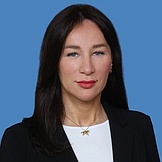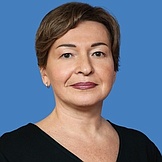Regional flags and emblems


Profile
Established 28 May 1938
Capital Murmansk
The Murmansk Region is part of the Northwestern Federal District
Area 144,900 sq km
Population 650 900 (2025)
Ethnic groups
(2020 national census, %)
Russian – 89,93
Ukrainian – 2,33
Other – 7,74
Administrative divisions (2024)
Municipal areas – 4
Municipal districts – 7
City districts – 6
Rural towns – 10
Rural districts – 9
Geography and Climate
The Murmansk Region is in the northwest of Russia. It comprises the Kola Peninsula (about 70% of the area), the continental part of the Rybachy and Sredny peninsulas, the Ainovskiye Islands, Veliky and Kildin islands and the Seven Islands. The region is 400 km from north to south and 500 km from west to east, almost all of it beyond the Arctic Circle.
In the west, the Murmansk Region borders on Norway and Finland; in the south, on the Republic of Karelia and the Arkhangelsk Region via the White Sea. The region has a coastline on the White and Barents seas.
There are 200 rivers, 111,573 lakes and 10 reservoirs in the region. The largest lakes are Imandra, Umbozero and Lovozero and the largest reservoir is the Verkhnetulomskoye.
The main rivers are the Ponoi, the Varzuga, the Umba and the Tuloma.
The main factors influencing the climate of the region are cold Arctic air masses and moisture from the Atlantic. The average January temperature is –7.8°C; the average July temperature is +16°C. Mean precipitation in January: 468 mm; mean precipitation in July: 32 mm. The polar night lasts from 22 November through 15 January and the polar day from 18 May through 24 July. The length of the vegetation period is between 80 and 130 days.
Vegetation: mixed forests (pine, fir and birch) and moss-and-lichen tundra.
Soils: podzol and swampy soils.
The region has 3 state nature reserves and 12 state nature sanctuaries.
Government
The legislative branch is the Murmansk Region Duma, which is the permanent representative and only body of legislative authority in the region.
The Murmansk Region Duma has 32 members elected for five-years. 22 members are elected in single-member and/or multiple-member constituencies and 10 members are elected in the single electoral district proportionately to the number of votes cast for the regional lists of candidates nominated by electoral associations.
The current members of the Murmansk Region Duma were elected on September 2021; their term expires in September 2026.
Executive power in the Murmansk Region is exercised by the Governor of the Murmansk Region, who is the highest-ranking official in the Murmansk Region, the Government of the Murmansk Region, which is the supreme body of executive power of the Murmansk Region, and other executive bodies of the region.
The Governor of the Murmansk Region forms and heads the regional Government and determines the main directions of its activities. The Governor is elected for five years by Russian citizens who permanently reside in the region. The incumbent Governor’s term expires in September 2029.
Economy and natural resources
The Murmansk Region is characterized by a high level of industrial development. Industrial production accounts for more than 30% of regional GDP. The processing sector is based on non-ferrous metallurgy, ore-processing plants, mica products, chemical products and the food and fishing industries.
Mining accounts for about 15% of regional GDP and based on proven reserves of chemical feedstock, as well as copper, nickel and iron ores, precious and rare metals and rare-earth elements. The region has considerable reserves of non-metallic minerals, such as vermiculite, phlogopite, muscovite, pegmatite, amazon stone and fluorite. It is also rich in chromium, titanium, raw materials that are used to manufacture building materials and fireclay, as well as facing stone and semi-precious stones. The local reserves of apatite and nepheline ore, kyanite ore and rare metals have global importance.
Rosenergoatom’s subsidiary, the Kola Nuclear Power Plant, produces and distributes electricity, gas and water in the region, which is over 5% of regional GDP. The region’s unique Kislogubskaya Tidal Power Plant – the only one of its kind in Russia – generates power from the tides.
The climate beyond the Arctic Circle restricts the region’s opportunities to develop agriculture, which accounts for less than 12.4 % of regional GDP. Local crop production and livestock farming fail to meet demand for the main types of produce.
The focus in crop production is on feed crops, while cattle, pigs and poultry are the mainstays of livestock farming in the region. Vegetables are largely grown in greenhouses. Cattle are raised for milk and kept in stalls for the most part; they are given feed that is brought in from elsewhere, rather than grown locally.
The transport and communications sectors account for over 8% of regional GDP.
Various forms of transport are available in the region so that people can travel by road, rail, air or water; trolleybuses are also very popular with locals.
The Murmansk–St Petersburg railway is the backbone of the regional railway system.
The federal R21 (Kola) Motorway, one of Russia’s major highways running through the region from St Petersburg via Petrozavodsk, Murmansk and Pechenga to the border with Norway, is part of the European E105 Kirkenes–Yalta route. There are three border checkpoints in the region – Borisoglebsk, Lotta and Salla. Murmansk is located 1,865 km from Moscow and 1,335 km from St Petersburg.
The two major airports are Murmansk Airport, which is an international hub, in the town of Murmashi, and Khibiny Airport in the city of Apatity.
The region has three commercial seaports: one is in Murmansk, another is in Kandalaksha, and then there is the specialized Port of Vitino. Being the only port to the northwest of Russia which is ice-free all year round, the seaport in Murmansk is a major hub that is used to transport goods to Russia’s Far North, the Arctic and abroad. The world’s only fleet of nuclear-powered ice-breakers is based in Murmansk.
Culture and tourism
The Murmansk Region offers plenty of tourism opportunities. Enthusiasts of nature tourism and wildlife photography will be able to get acquainted with the fauna of the area lying to the north of the Arctic Circle, watching and photographing reindeer, foxes, martens, ermines, elks, white grouses and snowy owls and, perhaps, even the master of the taiga – the brown bear. Divers will be fascinated by the unique underwater world of the two seas touching the region’s coastline. And the rapids of the region’s numerous rivers make for perfect rafting and kayaking.
Those interested in extreme tourism can travel to the North Pole and the Franz Joseph Land Archipelago aboard an ice-breaker or by dog sled.
Stone hunters can check out the deposits of amethyst, apatite and other minerals. Fishers stand a good chance of catching an impressive trophy – redfish, catfish, trout or even salmon. Of course, witnessing the spectacular display of the Northern Lights is always a thrill.
Downhill skiers can choose between the three resorts: one is located near Kirovsk in the Khibin Mountains; the other near Monchegorsk to the west of the mountains; and the third one near Kandalaksha to the south of the mountains. Downhill courses are 1.5 km to 2 km long (400 m to 600 m above sea level). The northern slopes of Aikuaivenchorr Mountain are specially prepared for freestyle skiers and also provide a home for a ski stadium and an ice-rink.
In addition to beautiful nature, the region has man-made attractions, such as the famous Geology Museum in Apatity; the ultra-deep Kola well, which was drilled to analyse the oldest geological rock formations on Earth, in Zapolyarny; and the Coloured Stone Museum that features famous amethyst druses from Cape Korabl in Monchegorsk.
In Murmansk, tourists are invited to visit the seaport where the Northern Sea Route begins and the world’s first ever ice-breaker, the Lenin, take a guided tour round Kola Bay and watch seals in the city’s oceanarium.
The Lapland Biosphere Nature Reserve is home to a large variety of animal, bird and fish species, as well as the iconic reindeer, concerns over whom prompted the idea of creating the nature reserve. The nature reserve is also famous for its primeval forests where you can see Lapland pine and Siberian fir trees which are 400 to 600 years old. The nature reserve offers ten eco-trails for visitors to walk.
The Murmansk Region is also a place for mystery and the unknown, such as the famous Seydozero Lake, called the Pearl of the Kola North. It is located 189 m above sea level in the middle of the Lovozyorskiye Tundri Mountain Range and is 8 km long and 1.5 km to 2.5 km wide. Surrounded by dark gray and green rocks, it is connected to Lovozero Lake by a stone path. The Sami people believe the lake to be sacred and every year they used to gather by sacred sites called sieidi on the shore of the lake to make sacrifices to the gods. Abnormal phenomena have been reported many times in the vicinity of Seydozero, leading teams of ufologists and cryptozoologists to regularly undertake expeditions to the area. The lake is famous for its unique aquatic fauna and rare plankton species, as well as its religious sites with stone idols worshipped by the Sami people.
Every year, the Murmansk Region hosts festivals that draw history and art lovers. The Snegolyod Festival brings together snow and ice sculptors from various countries. Guests of the Sami Games Festival can learn about the age-old traditions and customs of the Sami people, shoot a crossbow, try on traditional clothing, test their agility, take part in a fishing competition, sample hot fish soup, watch a real shaman dance and take home a charming souvenir handmade by a Sami craftsman.


